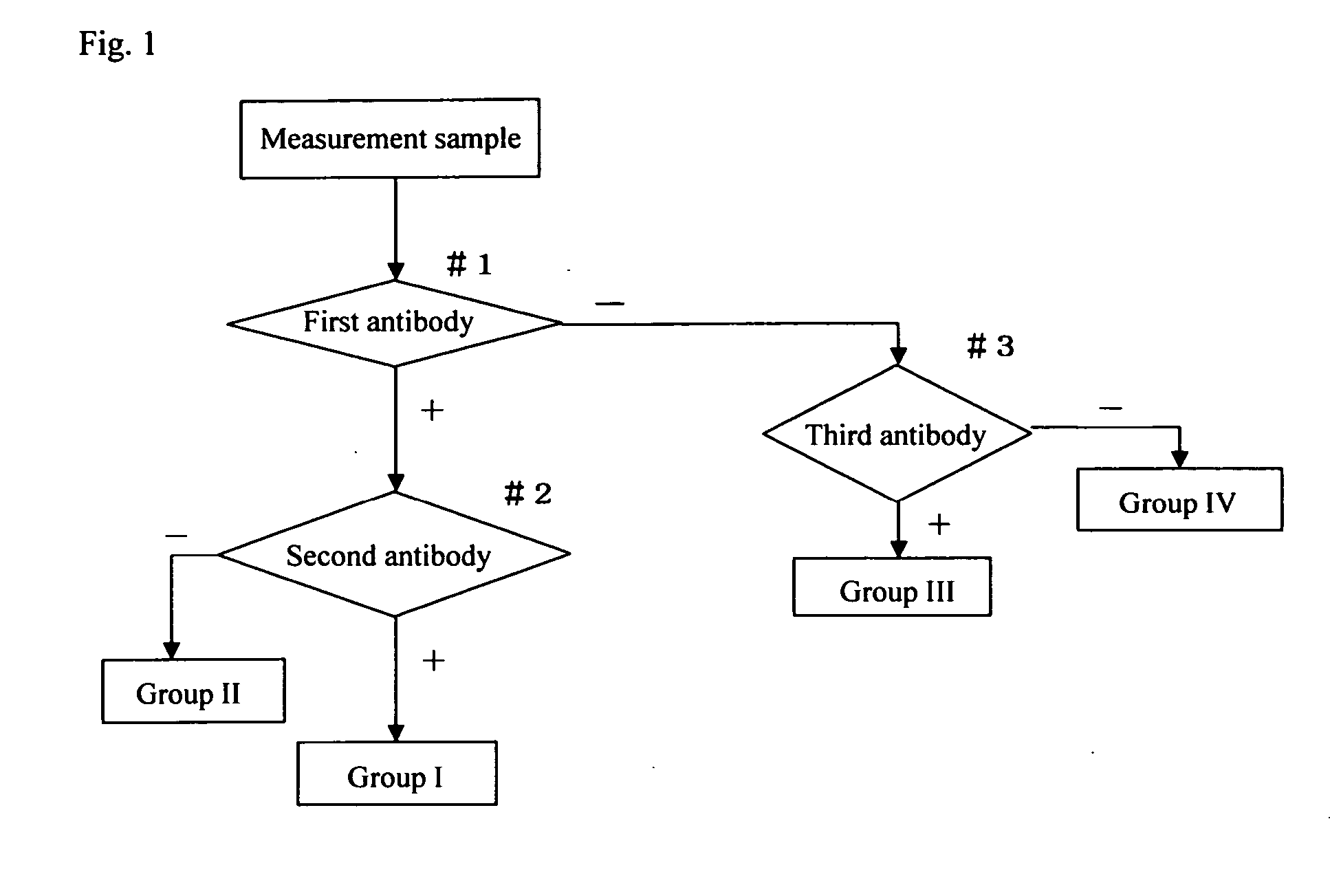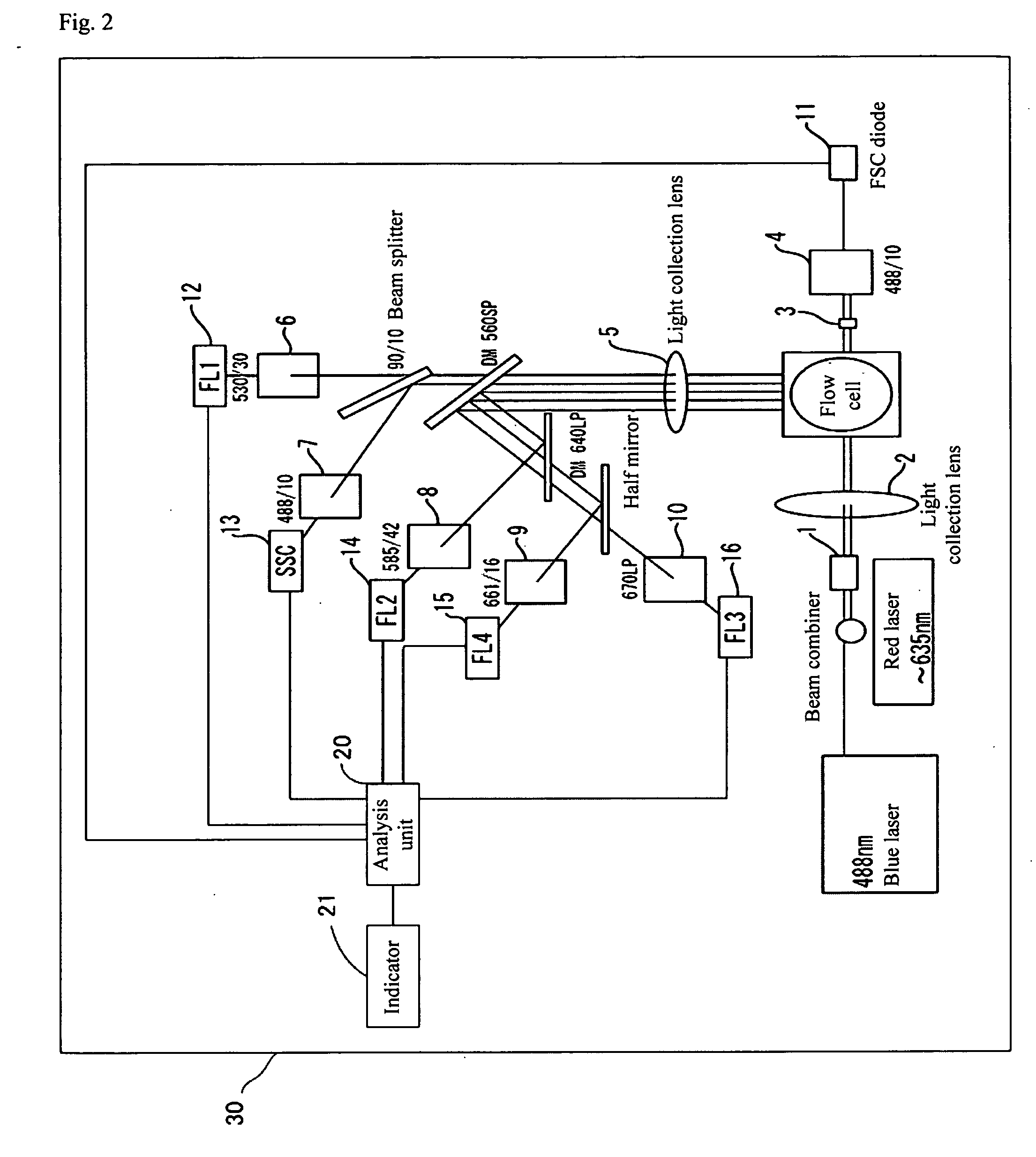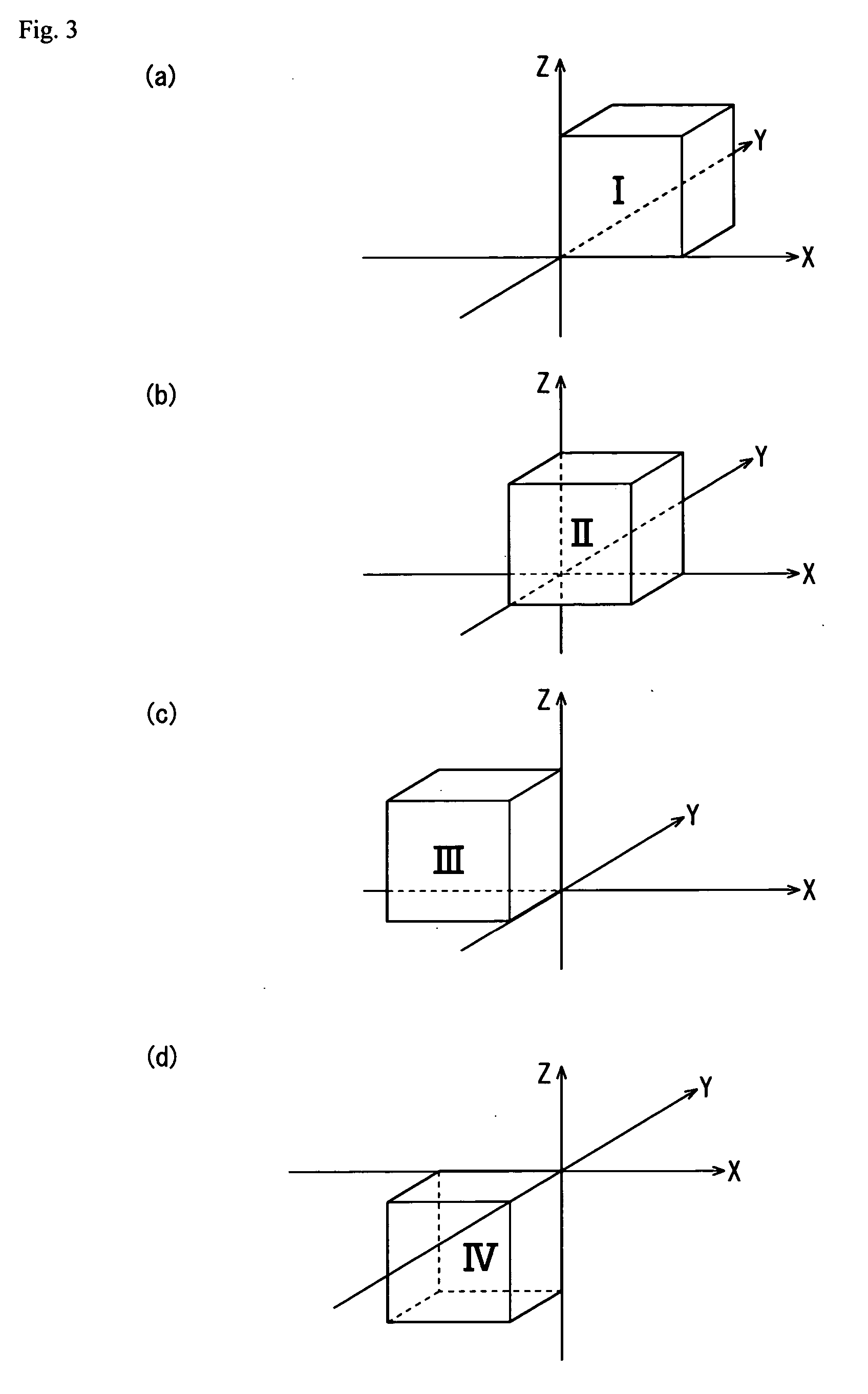Method for screening cervical cancer
a cervical cancer and reagent technology, applied in the field of reagents for diagnosing cervical cancer, can solve the problems of inability to obtain information for identifying the type of cancer, inability to accurately diagnose inability to identify the type of cancer, etc., and achieve the effect of high accuracy, effective diagnosis, and improved accuracy
- Summary
- Abstract
- Description
- Claims
- Application Information
AI Technical Summary
Benefits of technology
Problems solved by technology
Method used
Image
Examples
example 1
[0155] Four tubes were prepared, and HeLa cells, C33A cells and the clinical samples 1 and 2 were introduced at a density of about 1×106 cells into the tubes respectively. The cells were fixed with PreservCyt solution from Cytyc Ltd. and then centrifuged at 10000 rpm for 1 minute to remove a supernatant. Then, 5% N-acetyl-L-cysteine was added thereto, and the cells were stirred and centrifuged at 10000 rpm for 1 minute to remove a supernatant. The cells were washed with PBS and centrifuged at 10000 rpm for 1 minute to remove a supernatant. One ml PBS or PBS-T (PBS containing 0.05% Tween 20) containing 1% goat serum was added thereto, and the cells were stirred and subjected to blocking reaction for 10 minutes.
[0156] After blocking, the cells were centrifuged at 10000 rpm for 1 minute to remove a supernatant. The first labeled antibody-containing reagent prepared above was added thereto, and the cells were reacted for 30 minutes at room temperature.
[0157] After the antibody reactio...
example 2
[0165] About 1×106 epithelial cells in mouth cavity mucosa were introduced into a tube, and 100 μl of 300 μg / ml ribonuclease A (#R-4612 manufactured by Sigma) diluted with PBS was added to the cells to prevent non-specific staining of RNA. The cells were stirred for 5 minutes at room temperature and centrifuged at 10000 rpm for 1 minute to remove a supernatant. Then, 500 μl of 10 μM PI (propidium iodide) was added as a nucleus staining solution thereto, and the cells were stirred for 30 minutes at room temperature. The cells were centrifuged at 10000 rpm for 1 minute to remove a supernatant, and after 500 μl of 0.05% PBST was added thereto, the cells were centrifuged at 10000 rpm for 1 minute. The medium was replaced by a suitable amount of PBS, and the cells were subjected to a flow cytometer having the constitution shown in FIG. 6.
[0166] The sample was excited by an argon ion laser at 488 nm, and a fluorescence profile in orange derived from nuclear staining, a side scattered lig...
example 3
[0169] Oral mucosal epithelial cells as a substitute for the cervical normal squamous cells, HeLa cells as the cervical adenocarcinoma cells, and C33A cells as the cervical squamous carcinoma cells were used to prepare model samples, that is, a normal sample and 2 abnormal samples (cervical adenocarcinoma cells and cervical squamous carcinoma cells), and whether screening of cervical cancer in these samples was feasible or not was verified.
(Preparation of the Model Samples)
[0170] As the model sample (model sample of the normal sample) of cervical normal squamous cells, oral mucosal epithelial cells, about 2×105 cells / tube, preserved in a preservative solution PreservCyt (Cytyc; Cat#0234004) were used.
[0171] As the model sample of cervical adenocarcinoma cells, about 1×105 HeLa cells (from about 2×105 cells / tube preserved in PreservCyt) were mixed with about 1×105 cells of the above model sample of normal squamous cells, to prepare about 2×105 cells in total per tube.
[0172] As t...
PUM
| Property | Measurement | Unit |
|---|---|---|
| oscillation wavelength | aaaaa | aaaaa |
| oscillation wavelength | aaaaa | aaaaa |
| pass wavelength | aaaaa | aaaaa |
Abstract
Description
Claims
Application Information
 Login to View More
Login to View More - R&D
- Intellectual Property
- Life Sciences
- Materials
- Tech Scout
- Unparalleled Data Quality
- Higher Quality Content
- 60% Fewer Hallucinations
Browse by: Latest US Patents, China's latest patents, Technical Efficacy Thesaurus, Application Domain, Technology Topic, Popular Technical Reports.
© 2025 PatSnap. All rights reserved.Legal|Privacy policy|Modern Slavery Act Transparency Statement|Sitemap|About US| Contact US: help@patsnap.com



